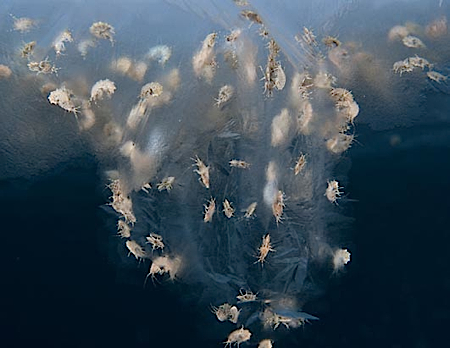The Long Tail of Life

We still have no idea how many species are alive on Earth. We can make some good guesses about the numbers of terrestrial varieties (for instance we know most of the birds), but in the ocean our ignorance is oceanic. To counter that absence of knowledge, the most methodical survey of life of this planet is being conducted in the sea. For the past decade the Census of Marine Life has been discovering new underwater species on a regular basis. On both land and sea, bacteria have generated the most surprises. Almost any time a biologist dips their bucket into the sea, and sequences the microbes floating in it, they can identify a new species of bacteria. That is not much of an exaggeration. According to a report in Science Daily,
During an 11 month study in 2007, scientists sequenced the genes of more than 180,000 specimens from the Western English Channel. One in every 25 readings yielded a new genus of bacteria.
Census research suggests that, within a particular size interval, more than 20 million types of bacteria live in sea water. However, Dr. Baross notes: “The total number of species of marine microbes, including both bacteria and archaea, based on molecular characterization, is likely closer to a billion.”
Wherever Census researchers looked they found many species in a sample represented by less than one in 10,000 of all individuals, including one-off singletons.
This suggests there is a long tail of life in bacteria, with a few species super-abundant, but many many species with very thin populations. At the far end of the tail there may be a billion species with only a few individuals.
At the same time there is no place in the ocean, no depth, no region of toxic waters, that has not revealed bacterial life.
On just two stops in the southeast Atlantic Angola Basin, they found almost 700 different copepod species (99 percent of them unfamiliar) in just 5.4 square meters (6.5 square yards), nearly twice the number of species described to date in the entire southern hemisphere.
And like other kinds of long tails, the sum of all these small bits total up to exceed the sum of individuals in the most popular species. As the microbiologists involved in the Census of Marine Life like to say, this survey reveals life’s “hidden majority.”
In the photo above, sand fleas (amphipod crustaceans) are shown under polar ice along the shore in the Beaufort Sea (Shawn Harper)


